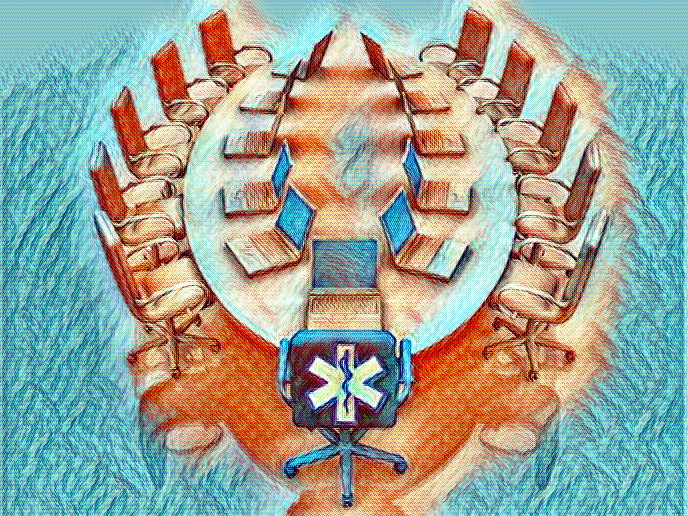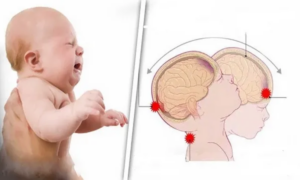by Ritu Sahni, MD, MPH, FAEMS

On the Friday before this past Thanksgiving, the President signed HR304, otherwise known as the Protecting Patient Access to Emergency Medications Act. In a year in which dysfunction would have been an improvement in the political world, this important legislation was passed in a bipartisan manner. As EMS physicians, we have a unique view. We look at our population as a whole – not necessarily individual cases and certainly just unique disease processes and specialties. We are not responsible for one patient at a time but an entire community. This is why advocacy matters. We have a responsibility to do what is right for our patients and as system-thinkers, we have a unique responsibility to do what we can to enhance the system. This is especially true when it comes to advocating on behalf of our patients and our system and this is why we helped create and advocated for HR304.
In January of 2015 I was completing my term as President of NAEMSP. We had been discussing issues regarding the management of controlled substances in EMS for years. The only consistency was inconsistency. In some locales, EMS Medical Directors were required to get a separate DEA license for every location that stored controlled substances of any variety. Some EMS agencies were required to get a distributors license because they “distributed” controlled substances among their various rigs and stations. It was in this context that the Drug Enforcement Administration’s policy/regulatory section approached the EMS community proposing to create a set of rules specific to EMS. We were pleased that there would possibly some consistency and excited to hear that the DEA was reaching out to the EMS community. During the NAEMSP meeting in New Orleans we had the opportunity to meet with the DEA’s policy personnel As we sat in my presidential suite in New Orleans it became increasingly clear that we had a problem. The DEA’s authority comes from the Controlled Substances Act. The CSA was written two years before Johnny and Roy premiered on television (for you youngsters – Johnny and Roy are a reason many of us ended up in EMS). The law didn’t anticipate the use of controlled substances in a mobile environment and without a physician present. Ultimately, the DEA stated that the CSA had some very specific guidelines as to when controlled substances could be delivered. The crux was this, all orders for controlled substances had to be “patient-specific.” There couldn’t be a “standing order” that allowed non-physicians to deliver controlled substances without an order given to them directly by a physician in real-time. When we suggested that the new EMS rules could allow this, the DEA representatives appropriately pointed that they could not write a rule that was counter to the requirements of the statute. The only way to get rules that made sense was to change the law.
NAEMSP had seen the importance of advocacy many years earlier. Dr. Richard Hunt correctly identified that EMS had been left out in the cold when there was a large increase in preparedness funding following the attacks on 9/11. Law enforcement and operational fire had received specific funding lines. Medical preparedness was focused on hospitals, who controlled local distribution of federal funds. He asked a staff member of his local congressman why was EMS left out and the answer was simple: EMS had no one at the table when decisions were being made. NAEMSP realized that caring for our patients required being involved when policy was made. A spot at the table requires resources, which NAEMSP was unable to afford by itself. As a result, Advocates for EMS (AEMS) was born.
Advocates was born from a desire to be provide a “Generic EMS” advocacy arm. NAEMSP sought to bring the “alphabet soup” of EMS organizations together to provide a patient-focused advocacy outlet separate from some of the issues that may divide us in EMS. Early on, the National Association of State EMS Officials (NASEMSO) was a key partner. Later on, the National Association of EMTs (NAEMT) was the major partner. This allowed the organizations to pool resources and invest in professional lobbying along with a more strategic legislative focus. AEMS adopted many strategies as it strove for relevance. Early on, AEMS sought to ensure that “report language” and grant requirements included EMS. It was successful in these endeavors and some small victories were helpful to the EMS community. Ultimately, AEMS attempted to get more aggressive and developed the EMS Field Bill. This bill was large and meant to be impactful. It called for a formal Federal “Home” for EMS that was in Health and Human Services (not NHTSA). It led to significant discussion and even controversy in the EMS community – but did not achieve passage. Ultimately, trying to run an “Association of Associations” can be difficult. Each association has a slightly different “twist” on EMS issues and more importantly, different processes when it comes to setting legislative goals. As this became more difficult, AEMS had to come to end. This does not mean AEMS was a failure. In fact, it was quite the opposite. EMS associations realized that “You must be present to win.” Having a presence in Washington, DC is imperative or national policy will roll right over you. Based on this experience, NAEMSP decided that it needed to invest its resources into a permanent presence in Washington.
This brings us back to the DEA. Shortly after NAEMSP formalized its own government affairs plan by creating an Advocacy Committee and contracting with Holland & Knight as our DC representation, it became apparent that any regulations regarding controlled substances would negatively impact patient care. This is not because regulations are inherently bad, but because the CSA was not designed for prehospital use. Because of the lobbying experience available to us from our Holland and Knight partners, we were able to identify a Member of Congress willing to listen to us and take up our fight. Representative Hudson from North Carolina heard us and, as a result introduced the Protecting Patient Access to Emergency Medications Act. We tried our hand at Advocacy. NAEMSP members starting contacting Congress. Additionally, we quickly partnered with ACEP and NAEMT – both of whom activated their membership on the issue. NAEMT agreed to make the bill a priority on EMS on the Hill and members of the EMS community walked the hall of Congress to advocate for a bill in which NAEMSP led the development. Our issue almost got done in 2016 – which would have been amazing. But politics prevailed, and the bill didn’t pass. Representative Hudson didn’t give up and he reintroduced the bill in the House and Senator Cassidy introduced the bill in the Senate. This time, the pieces fell into place and the bill was passed by both the House and the Senate, and signed by the President. To some it was a small thing, but using protocols or “standing orders” for EMS to deliver controlled substances was now legal. Presence in Washington would have a direct and positive impact on the provision of care at the patient’s side.
What next?
NAEMSP strives to continue to be a force in healthcare policy development, especially as it relates to time-critical emergencies and high quality prehospital care. As we move forward, the issue of medical oversight and its value to the system and role in driving quality care is key. High quality medical direction improves patient outcomes and the system should acknowledge that and fund it. NAEMSP plans to lead this discussion. Your membership in NAEMSP helps fund this. Additionally, NAEMSP has decided to form a political action committee or PAC. Unfortunately, neither George Soros or the Koch Brothers can fund this PAC. Only NAEMSP members can fund the PAC. Why do we do this? It allows NAEMSP to do it what it can in an aboveboard and ethical manner to support legislators who are open and supportive to EMS. How can you help? Here are a couple of things:
- Donate money to the PAC (www.naemsppac.com)
- Attend the NAEMSP Government Relations Academy on April 10 (Space available on First come, First Serve Basis, Click here to RSVP)
- Attend the NAEMT EMS on the Hill Day on April 11 (https://www.naemt.org/events/ems-on-the-hill-day)
- Get involved in local politics
- Be present at local and state meetings, especially when EMS issues arise.
- Serve on local and state policy committees that impact EMS
- Here’s the crazy one – RUN FOR OFFICE. Imagine a world in which your county commissioner is an actual EMS physician? It could be a game changer. We can provide information but only when holding the levers of power can you truly make change.
In EMS, we are system-thinkers. Our primary objective is to improve the care of patients in our entire community. We cannot assume that lawmakers will understand the intricacies of the care we provide or the barriers we face in achieving our primary objective. We must be at the table.




